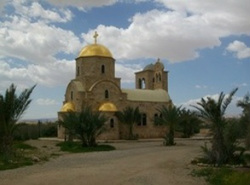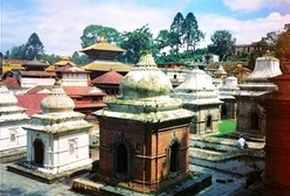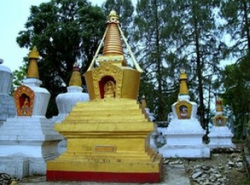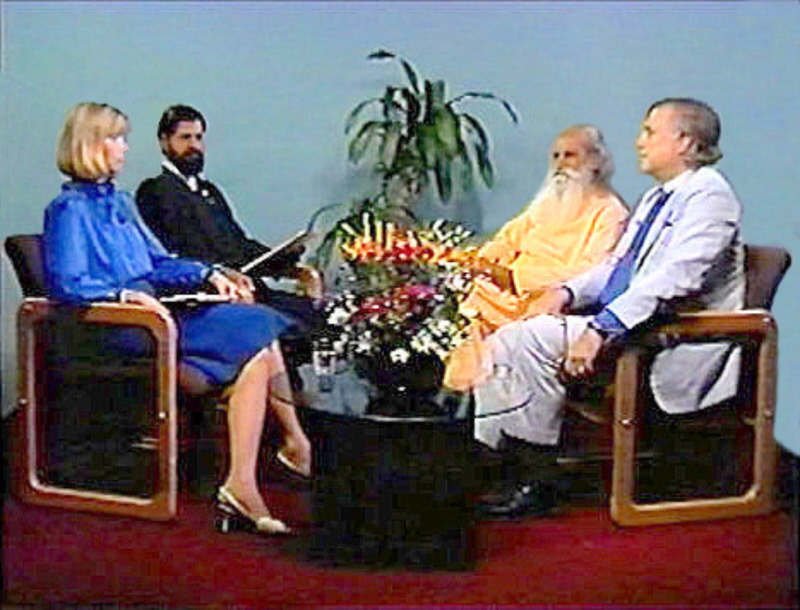Embrace Foundation International
Most people will land in Tunis when arriving in Tunisia. Downtown Tunis has a large beautiful boulevard (Avenue Habib Bourguiba). The kind that usually comes after occupation by a European nation. Despite the cruelty and dehumanization of colonization, the wide boulevards colonizers left behind in many countries are enviable. American’s can only wish that their country had urban planners who designed cities where people could actually walk throughout all of a downtown and even amuse themselves in such large centrally located public areas as Tunisians do with music, bands and other performances under the trees.
The Tunisian people are refreshingly straight forward and the younger women are strong and very independent. Sidewalk cafes are to be found lining the boulevard everywhere, so it is a pleasure to walk the entire boulevard from the train station that takes you to Sidi Abu (with dozens of high school kids) all the way down to the Medina where the Zaytuna Mosque is located.
The Tunisian people are refreshingly straight forward and the younger women are strong and very independent. Sidewalk cafes are to be found lining the boulevard everywhere, so it is a pleasure to walk the entire boulevard from the train station that takes you to Sidi Abu (with dozens of high school kids) all the way down to the Medina where the Zaytuna Mosque is located.
Embrace Foundation is a non-profit, educational foundation set up to create better understanding between people of different religions, cultures, traditions and world philosophies.
Embrace Foundation works to bring leaders and scholars of world-wide religions, cultures and philosophies together by sponsoring forums, seminars, lectures and developing an international exchange program. Embrace Foundation is particularly concerned with reaching the world public through the media.
Embrace Foundation works to bring leaders and scholars of world-wide religions, cultures and philosophies together by sponsoring forums, seminars, lectures and developing an international exchange program. Embrace Foundation is particularly concerned with reaching the world public through the media.
Purpose

Donations
Embrace Foundation is an all volunteer organization. All donations go directly to programs.
Embrace Foundation does not and has never given permission to any outside organization to solicit or receive contributions on our behalf.
All donations should be made to Embrace Foundation only via Paypal or by mail. All donations are tax deductible. A receipt will be emailed to you. Please click on the Pay Pal link below to Donate.
Embrace Foundation does not and has never given permission to any outside organization to solicit or receive contributions on our behalf.
All donations should be made to Embrace Foundation only via Paypal or by mail. All donations are tax deductible. A receipt will be emailed to you. Please click on the Pay Pal link below to Donate.

Travel As An Interfaith Act
Embrace encourages all who can do so, to learn about other traditions and cultures by traveling as “Grassroots Diplomats.” We hope that people every where become life long students of our world-wide humanity.
“ In every man there is something wherein I may learn of him, and in that I am his pupil.”
R.W.Emerson
“ In every man there is something wherein I may learn of him, and in that I am his pupil.”
R.W.Emerson


Embrace Humanity

Great Visions - TV
Guests are: Swami Satchidananda &
the Rt. Reverend Dean Parks Morton

Embrace Archives
Thank you for making a donation.
WHERE ARE THE RESTAURANTS?
OK there is one very strange caveat to this idyllic scenario. Tunisians in this area hardly ever eat out at a sit down restaurant. There are plenty of “Parisian style” fast food cafes that all serve basically the same very limited menu, but almost no restaurants. When we were first told this by a young American who had been until recently an urban planner (we are not kidding) for Florida’s largest city, Ajata and Virginia didn’t pay much attention. It was their first night in Tunis.
Near the University, a few blocks away, students stand at places that serve quick meals. Ajata and Virginia found only two real restaurants along the entire boulevard. They are: Le Grand Cafe du Theater (a restaurant, not a cafe and clean) and an Italian Restaurant (whose name can not be recalled) which was also clean and charming.
OK there is one very strange caveat to this idyllic scenario. Tunisians in this area hardly ever eat out at a sit down restaurant. There are plenty of “Parisian style” fast food cafes that all serve basically the same very limited menu, but almost no restaurants. When we were first told this by a young American who had been until recently an urban planner (we are not kidding) for Florida’s largest city, Ajata and Virginia didn’t pay much attention. It was their first night in Tunis.
Near the University, a few blocks away, students stand at places that serve quick meals. Ajata and Virginia found only two real restaurants along the entire boulevard. They are: Le Grand Cafe du Theater (a restaurant, not a cafe and clean) and an Italian Restaurant (whose name can not be recalled) which was also clean and charming.
HYGIENE & SANITATION
Sanitation is a major consideration in Tunis. We have seen waiters drop silverware in a heavily trafficked area and then give it to customers. There are more incidents of gross negligence of basic hygiene in cafes but it serves no purpose to relate them.
There also seems a notable lack of disinfectants for housekeepers to use when cleaning hotel bathrooms.
Sanitation is a major consideration in Tunis. We have seen waiters drop silverware in a heavily trafficked area and then give it to customers. There are more incidents of gross negligence of basic hygiene in cafes but it serves no purpose to relate them.
There also seems a notable lack of disinfectants for housekeepers to use when cleaning hotel bathrooms.
WOUNDED LIBYANS IN TUNISIAN HOSPITALS
We heard numerous times that wounded people from Libya were coming to hospitals in Tunis, because Libyan hospitals were in such bad shape.
(The result of America’s attack on the Libyan people and the Special Forces murder of the American Ambassador in Libya who spoke out in opposition to the attack. In addition, the US. is attempting to install a puppet leader who will do the bidding of the Western Oil Companies. This has renewed the fighting.)
The hospital situation gave the Embrace Founders cause to wonder what condition Tunisian hospitals themselves were in. Ajata and Virginia asked themselves repeatedly, why Tunisian health care professionals were not educating the public on issues of basic sanitation in a major media campaign.
We heard numerous times that wounded people from Libya were coming to hospitals in Tunis, because Libyan hospitals were in such bad shape.
(The result of America’s attack on the Libyan people and the Special Forces murder of the American Ambassador in Libya who spoke out in opposition to the attack. In addition, the US. is attempting to install a puppet leader who will do the bidding of the Western Oil Companies. This has renewed the fighting.)
The hospital situation gave the Embrace Founders cause to wonder what condition Tunisian hospitals themselves were in. Ajata and Virginia asked themselves repeatedly, why Tunisian health care professionals were not educating the public on issues of basic sanitation in a major media campaign.
THE CHURCHES & A SYNAGOGUE
Tunis has at least three lovely churches. The St. Vincent de Paul Catholic Church, the St. George Greek Orthodox Church and the Russian Orthodox Church of the Resurrection. The Embrace Founders spent a considerable amount of time with Mariana, a volunteer and head of most activities at the St. George Greek Orthodox Church. Mariana told us that many of the ambassadors and people working at embassies from Orthodox countries attend the church and for some holiday programs they participate with their friends at the Russian Orthodox Church.
Tunis has at least three lovely churches. The St. Vincent de Paul Catholic Church, the St. George Greek Orthodox Church and the Russian Orthodox Church of the Resurrection. The Embrace Founders spent a considerable amount of time with Mariana, a volunteer and head of most activities at the St. George Greek Orthodox Church. Mariana told us that many of the ambassadors and people working at embassies from Orthodox countries attend the church and for some holiday programs they participate with their friends at the Russian Orthodox Church.
We could not find the Russian Orthodox Church so Embrace has no photos of it. Mariana is Greek. Her husband of many decades is a Tunisian Muslim. She has worked endlessly when not at her job at the Greek Embassy, to keep the church running, even when they do not have a priest and to also see that it is protected as best she is able. Since democracy has taken over, the safety of churches and the synagogue has somewhat diminished. Politicians want to get elected, so they do nothing that will alienate any voters – even the tiny minority of potential terrorists. While the Tunisians are pretty progressive for North Africa, there is a minority that is unable to fully embrace a secular “inter-faith” nation. (Once again, the Embrace Founders see the hand of countries outside of Tunisia at work here.) Nevertheless, with the sort of books the Founders saw in the windows of bookstores, including on the Avenue Habib Bourguiba featuring The Dalai Lama, things are definitely changing with the young.) When Mariana, Ajata and Virginia were done conversing, Mariana asked them if they had been to the synagogue yet and then gave them directions to it.
The synagogue has police guards at posts in front and back. When the Embrace Founders began taking photos, the guards got worried and told Ajata and Virginia they couldn’t photograph. The guards were shown the Embrace business cards with photos of the many religious leaders from different faiths at the International Press Conference for Peace at the U.N. The Founders were surprised at the relief and gratitude those guarding the synagogue had for the work of Embrace. Ajata and Virginia were then allowed to take photographs and were told when the Rabbi would be coming.
SIDE ONE:
Djerba Island offered Ajata and Virginia some interesting insights while staying at a resort style hotel. Many of the guests were French and German who come to the hotel every winter and stay for weeks or months at a time. These were all retired people of course. Some friends seemed to meet up at the hotel every Winter and knew every activity and every location at the hotel like the back of their hand.
SIDE TWO:
Contrarily, many young families with children from Libya arrived to get away from the fighting. Djerba Island isn’t far from Libya geographically. Libyans are notable for being well-mannered but perhaps slightly more traditional than the Tunisians. All Tunisians feel sorry for the Libyans. Islam is often like a giant family. It is rare that a Muslim does not identify with and sympathize with the suffering of other Muslims. Obviously, it is also hoped that Libya’s problems will not flow over the border to Tunisia. Tunisia is finally stabilizing and its’ future looks positive.
Djerba Island offered Ajata and Virginia some interesting insights while staying at a resort style hotel. Many of the guests were French and German who come to the hotel every winter and stay for weeks or months at a time. These were all retired people of course. Some friends seemed to meet up at the hotel every Winter and knew every activity and every location at the hotel like the back of their hand.
SIDE TWO:
Contrarily, many young families with children from Libya arrived to get away from the fighting. Djerba Island isn’t far from Libya geographically. Libyans are notable for being well-mannered but perhaps slightly more traditional than the Tunisians. All Tunisians feel sorry for the Libyans. Islam is often like a giant family. It is rare that a Muslim does not identify with and sympathize with the suffering of other Muslims. Obviously, it is also hoped that Libya’s problems will not flow over the border to Tunisia. Tunisia is finally stabilizing and its’ future looks positive.
TRAVELING IN TUNISIA - 2020
Swami Satchidananda, Pir Vilayat & Ajata
DJERBA ISLAND
The Embrace Founders came to Djerba island exclusively to visit and photograph the El Ghariba Synagogue. It was founded (no one really knows) either after the first or second destruction of Solomon’s Temple. It is believed that those who came to Djerba from the Holy Land brought with them a stone and a door from the Solomon’s Temple and that these were incorporated into the synagogue in Djerba. Regardless, this is a major pilgrimage place for many Jewish faithful. Many tourists (even those who are not Jewish) stop by to see it. (Photographs can be seen above.)
The Embrace Founders came to Djerba island exclusively to visit and photograph the El Ghariba Synagogue. It was founded (no one really knows) either after the first or second destruction of Solomon’s Temple. It is believed that those who came to Djerba from the Holy Land brought with them a stone and a door from the Solomon’s Temple and that these were incorporated into the synagogue in Djerba. Regardless, this is a major pilgrimage place for many Jewish faithful. Many tourists (even those who are not Jewish) stop by to see it. (Photographs can be seen above.)
ABOUT THE NORTH AFRICAN SUFI COMMUNITY
It took Ajata and Virginia a second North African country to understand the strange denial of Sufis, especially since the Tunisian Airlines Magazine had a major article about the “Trail of Sufis” leading from Djerba Island and on through the Southern and Eastern part of Tunisia. In addition, it was strange to find young women named Rabia (Rabe’ah) which has no value unless parents want to name their daughter after the fourth month in the Islamic calendar if they didn’t know what a Sufi was. Rabia is however, significant when the name is linked with Rabia of Basra, the woman Sufi Saint.
Suddenly, the Embrace Founders realized after they had listened to chanting during the day at the Kairoun Mosque and other Masjids, that many practices which had been considered largely within the purview of Sufi communities have been spread throughout entire congregations. There are now “Communities of Believers” who practice special wafizas at both large social gatherings, as well as, at the mosques during hours and days when there are not the traditional Sufi Order gatherings. It seems that some Sufi Orders have even passed out their sisilas (chain of Saints recited as a remembrance.)
The names used by members of congregations for these practices just fall into the category of “Muslim” and the people who taught these practices are just “devout” Muslims.
So one mystery has been solved.
It took Ajata and Virginia a second North African country to understand the strange denial of Sufis, especially since the Tunisian Airlines Magazine had a major article about the “Trail of Sufis” leading from Djerba Island and on through the Southern and Eastern part of Tunisia. In addition, it was strange to find young women named Rabia (Rabe’ah) which has no value unless parents want to name their daughter after the fourth month in the Islamic calendar if they didn’t know what a Sufi was. Rabia is however, significant when the name is linked with Rabia of Basra, the woman Sufi Saint.
Suddenly, the Embrace Founders realized after they had listened to chanting during the day at the Kairoun Mosque and other Masjids, that many practices which had been considered largely within the purview of Sufi communities have been spread throughout entire congregations. There are now “Communities of Believers” who practice special wafizas at both large social gatherings, as well as, at the mosques during hours and days when there are not the traditional Sufi Order gatherings. It seems that some Sufi Orders have even passed out their sisilas (chain of Saints recited as a remembrance.)
The names used by members of congregations for these practices just fall into the category of “Muslim” and the people who taught these practices are just “devout” Muslims.
So one mystery has been solved.
NOTE:
The Wahhabi are one of the smallest sects in Islam whose members number only among two lightly populated countries: Saudi Arabia (and Qatar, a country with a far more modern version.) The Wahhabi Ulama in Saudi Arabia and some members of the Saudi Royal Family (not the grassroots Saudis) have been involved with training terrorists to bomb Sufi Shrines and Mosques all over the world. It seems however, they can never conquer the spirit of Al Wadud (Allah’s Love) or of Al Wasi (Allah’s All Embracing Nature and Unlimited Tolerance.) from the Holy Qur'an.
The Wahhabi are one of the smallest sects in Islam whose members number only among two lightly populated countries: Saudi Arabia (and Qatar, a country with a far more modern version.) The Wahhabi Ulama in Saudi Arabia and some members of the Saudi Royal Family (not the grassroots Saudis) have been involved with training terrorists to bomb Sufi Shrines and Mosques all over the world. It seems however, they can never conquer the spirit of Al Wadud (Allah’s Love) or of Al Wasi (Allah’s All Embracing Nature and Unlimited Tolerance.) from the Holy Qur'an.

Embrace Foundation Retreat Center
Embrace.Foundation (skype messaging) - 011+1+212.675.4500 (New York)
Click to Email Us
- Great Visions TV
- Inspirations
- Media
- Possibilities
- Astrophysics, Quantum Physics & The Nature of Reality
- Deconstructing Nuclear Fission & Nuclear Waste
- Defense Industry as Community Builders
- Defense Industry As Energy Providers
- Global Water Shortages
- Innovative Technology
- Intelligent Communities
- Pentagon & Non-Western Nations
- Recreating
- Resource Based Population
- Sharing Community Resources
- Protecting Human Rights
- Spiritual Ecology
- Syria
- Write to Us


